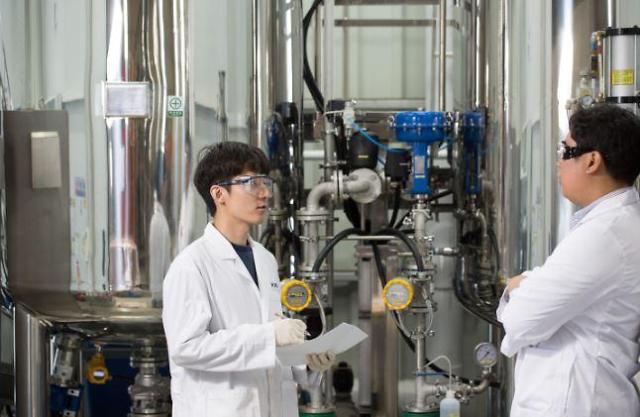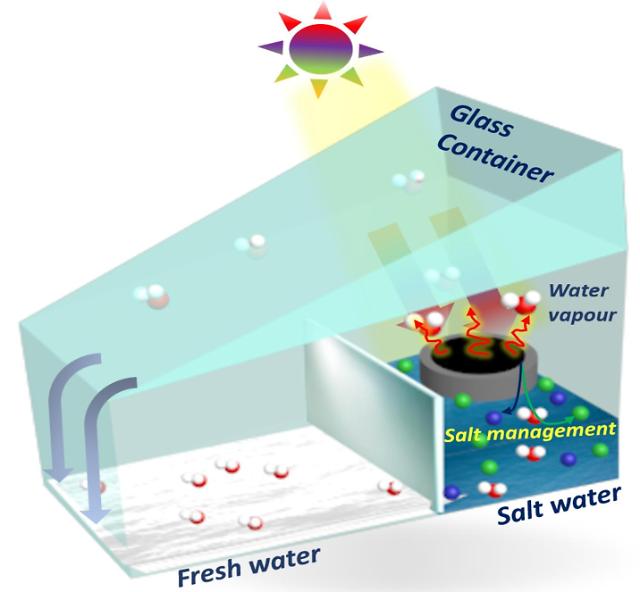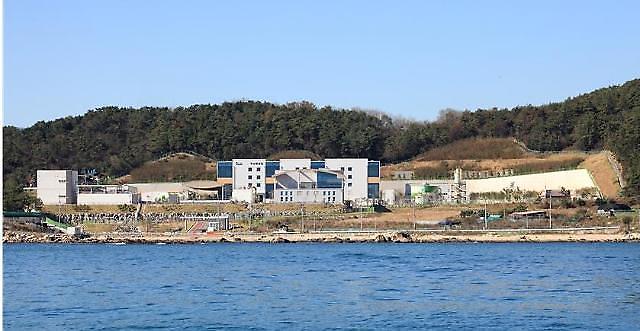
[Courtesy of the Korea Institute of Energy Research]
The United Nations Environment Program (UNEP) has warned that the disposal of toxic brine is costly and associated with negative environmental impacts. South Korean researchers proposed an innovative method to greatly reduce energy in desalination through the fusion of reverse electrodialysis and reverse osmosis technology.
The fusion method enables eco-friendly fresh water and electricity production, the state-run Korea Institute of Energy Research (KIER) said, adding that researchers would develop large-capacity pilot plants to strengthen technology competitiveness and tap overseas markets.
A KIER team found that the unit cost of freshwater production can be reduced by more than 10 percent through large capacity and optimization. "It will be possible to lead the world in technology through the early completion of large-capacity demonstrations and continuous government support," Jeong Nam-jo, a senior KIER researcher, said in a statement on July 21.
Desalination uses thermal or membrane techniques. The thermal method uses sunlight or other heat sources to evaporate water and leave salt behind. Using reverse osmosis, the membrane method pushes saltwater through a semipermeable membrane to filter salt and other impurities.
Reverse electrodialysis generates electricity using the potential difference between seawater and freshwater ions separated and moved through ion exchange membranes in the stack. Reverse osmosis, which accounts for more than 70 percent of desalination worldwide, consumes a lot of energy and releases concentrated seawater back to the sea, increasing salt concentration and causing marine pollution.
Researchers connected reverse electrodialysis generators to the front and rear of reverse osmosis modules. A pattern-type ion exchange membrane for reverse electrodialysis and an osmotic membrane for reverse osmosis were developed together.
Jeong's team succeeded in producing 100 tons of fresh water a day with a fusion method that reduced energy consumption by more than 30 percent compared to existing reverse osmosis technology, KIER said, adding the world's first fusion process can simultaneously solve two technical issues of realizing the eco-friendly treatment of enriched seawater and reducing energy consumption in a single plant.
The reverse electrodialysis generator placed at the front can reduce the concentration of seawater by more than 20 percent. The reverse osmosis process reduced energy consumption, the institute said.
Through reverse osmosis, KIER said that concentrated seawater discharged with fresh water is stored as a high-density energy source, converted into electricity when necessary using reverse electrodialysis generators installed at the rear end. The final concentration of discharged water was at the level of seawater.
Copyright ⓒ Aju Press All rights reserved.




View more comments